Crusty Artisan Bread
This post may contain affiliate links. Read my full disclosure policy.
This crusty bread recipe is astonishingly easy—no kneading required—and makes three beautiful loaves, which you can bake as needed.
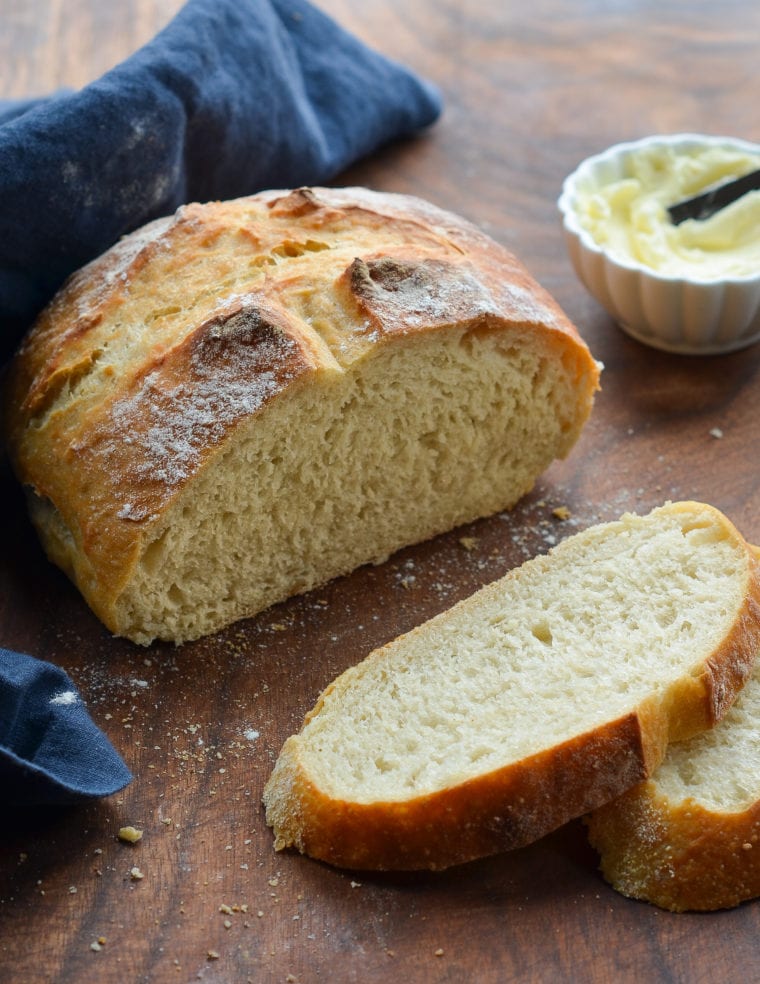
This homemade artisan bread recipe is astonishingly easy, and it makes enough for three delicious loaves, which you can bake as needed. What’s more, the dough takes just five minutes to make, does not require kneading or any special equipment, and can rest in the fridge for up to two weeks (the flavor becomes more complex the longer it sits). The recipe is modestly adapted from one of my favorite baking books, Artisan Bread in 5 Minutes A Day by Jeff Hertzberg M.D. and Zoë François.
Table of Contents
What You’ll Need To Make Crusty Artisan Bread
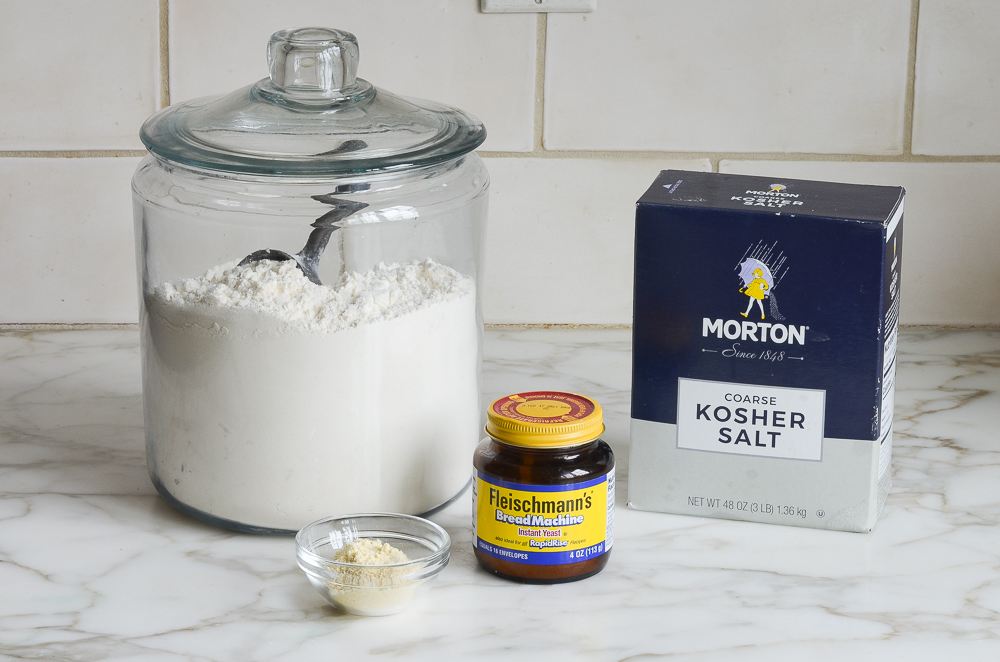
This recipe has just four ingredients: all-purpose flour, instant yeast, kosher salt, and water. (The cornmeal is for dusting the pan.) As you can see, I use instant (or rapid-rise) yeast. Active dry yeast may be used instead of instant yeast, however, the dough will take longer to rise. To give active dry yeast a boost, you can dissolve it in the lukewarm water and let it sit until frothy, about 10 minutes. After that, add it to the flour and proceed with the recipe.
How To Make Crusty Artisan Bread
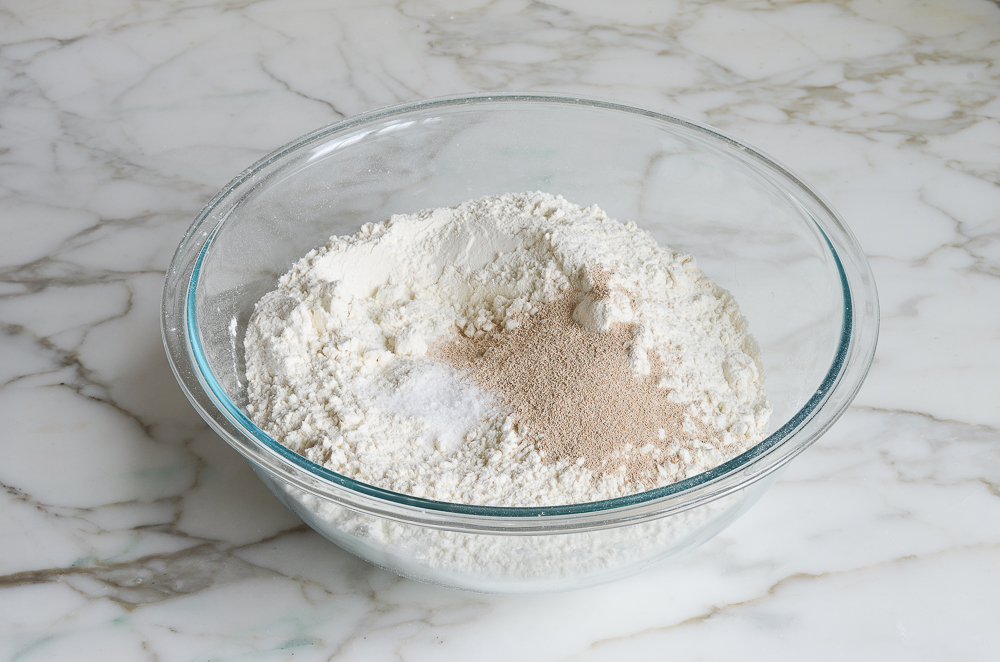
In a very large (6-quart) bowl, combine the flour, salt, and yeast. Mix to combine.
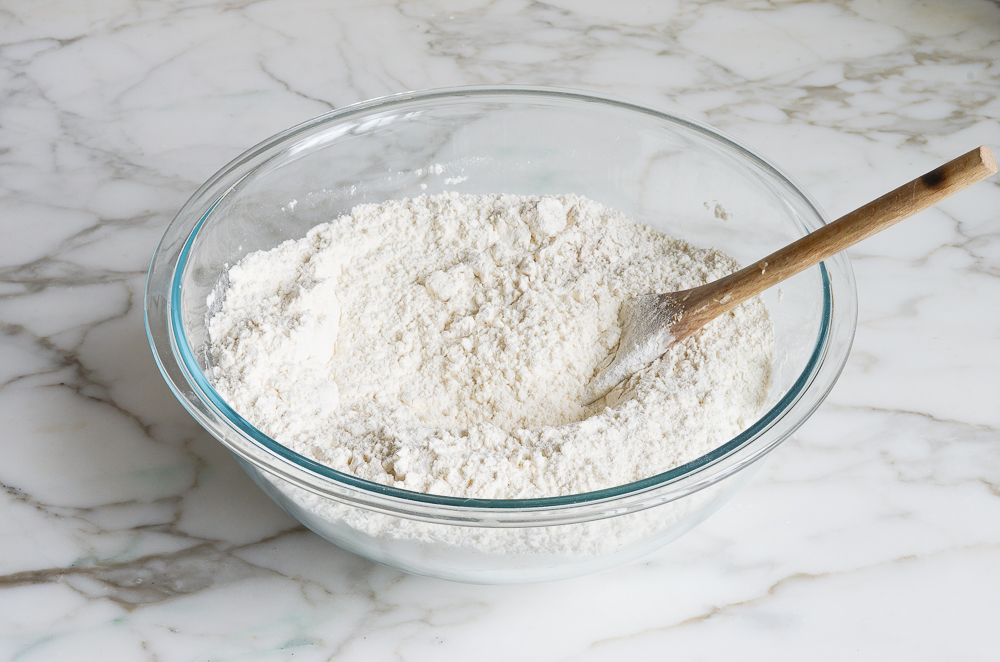
Add 3 cups of lukewarm water (no need to be exact but lukewarm is about 100°F).
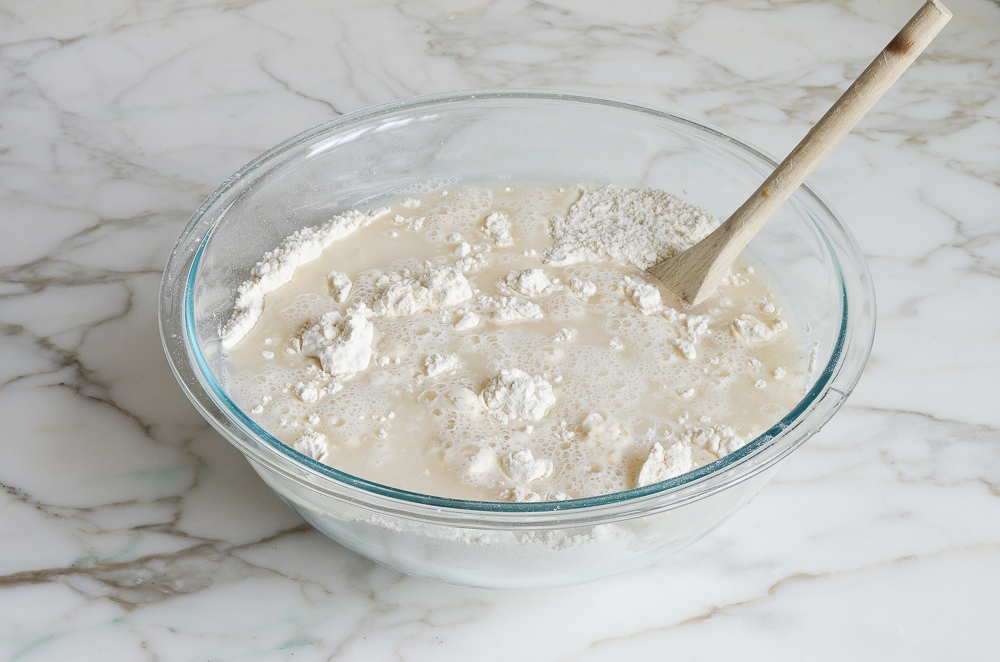
Stir with a wooden spoon until the mixture is uniformly moist, without any patches of flour.
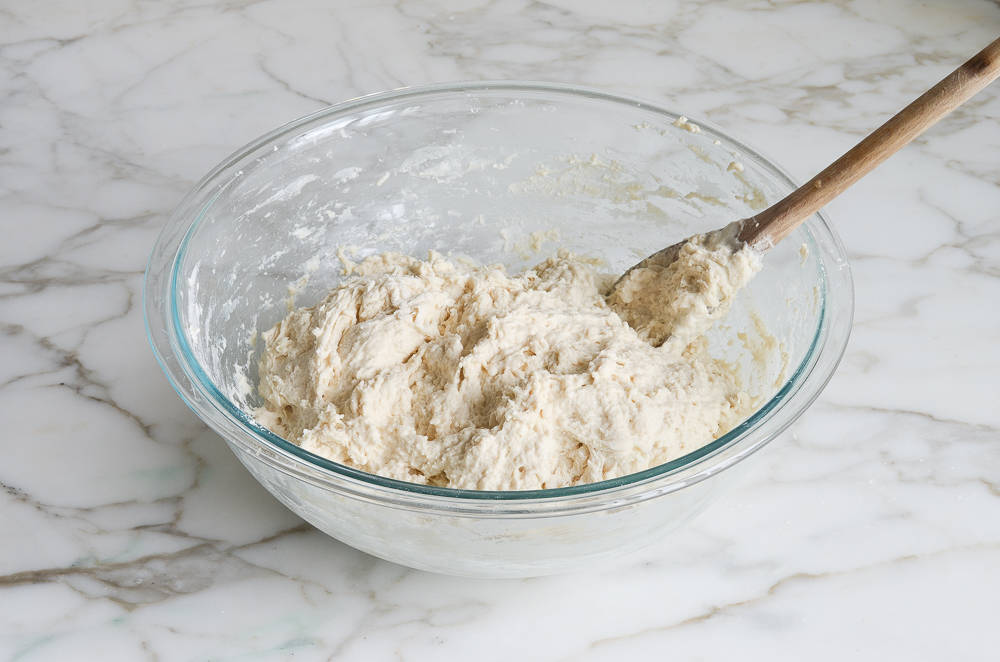
The dough should be sticky and conform to the shape of the bowl. If your dough is too dry, add a few tablespoons more warm water. If it’s too wet, add a few tablespoons of flour. Cover the bowl loosely with plastic wrap and let it sit on the counter in a warm spot for 2 hours. As you can see below, it will rise a lot!
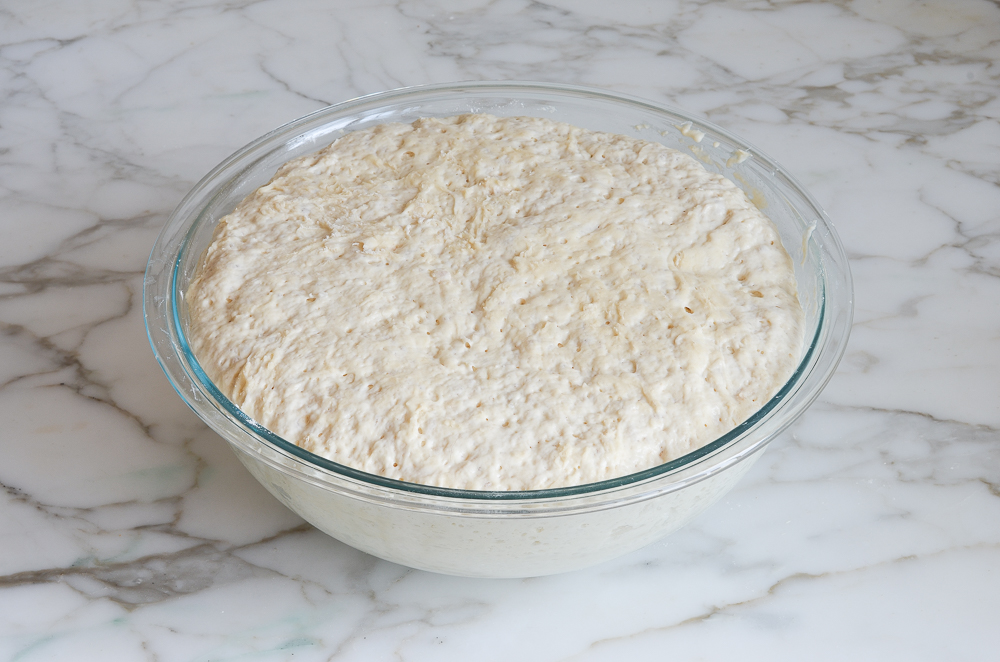
When you’re ready to bake a loaf, pull out one-third of the dough.
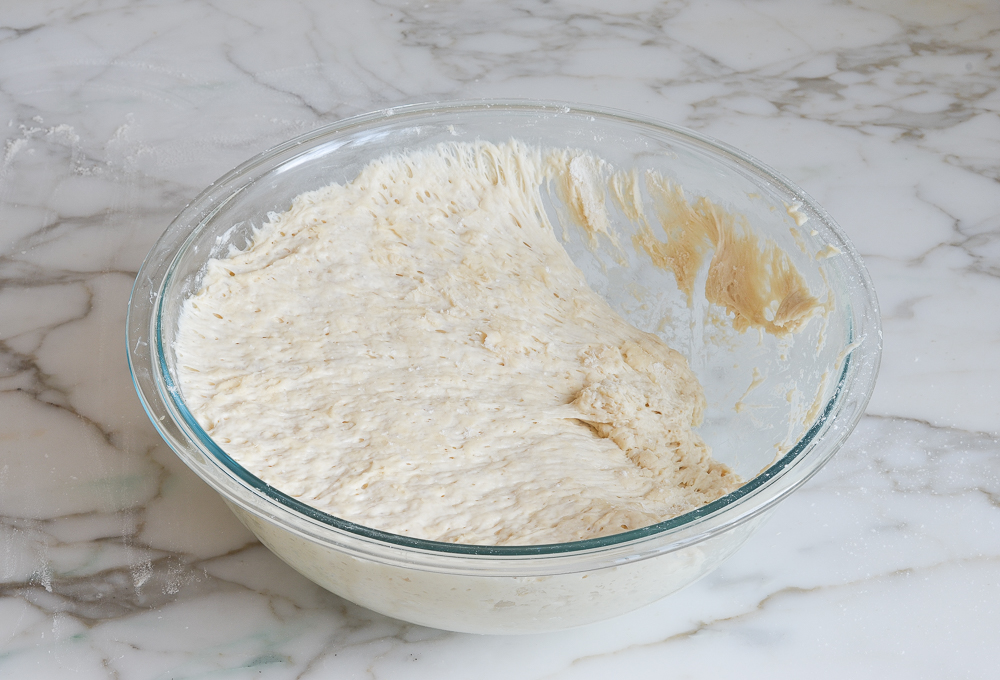
Coat the outside lightly with flour (you don’t want to incorporate more flour into the dough, you just want to be able to handle it). Gently work the dough into a smooth ball, stretching the surface and tucking the ends underneath.
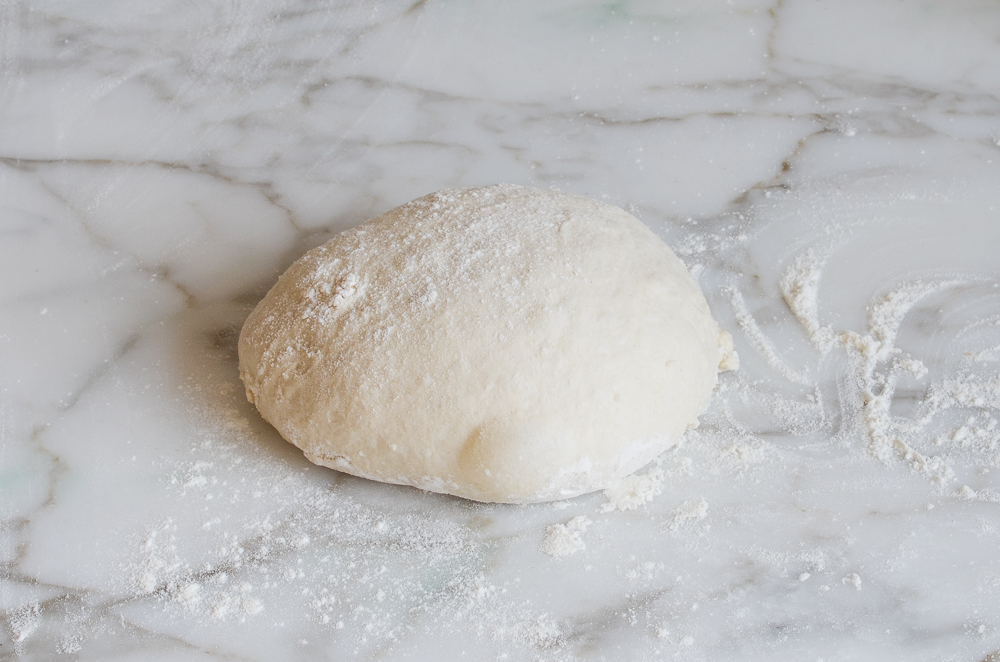
Put the dough ball onto a cornmeal-dusted baking sheet and let rest at room temperature, uncovered, for about 40 minutes. (If the dough has been refrigerated, allow it to rise for 60 minutes, or up to 90 minutes if you want a more open and airy crumb structure.) The dough will rise a bit. It may also spread/flatten a bit; that’s okay.
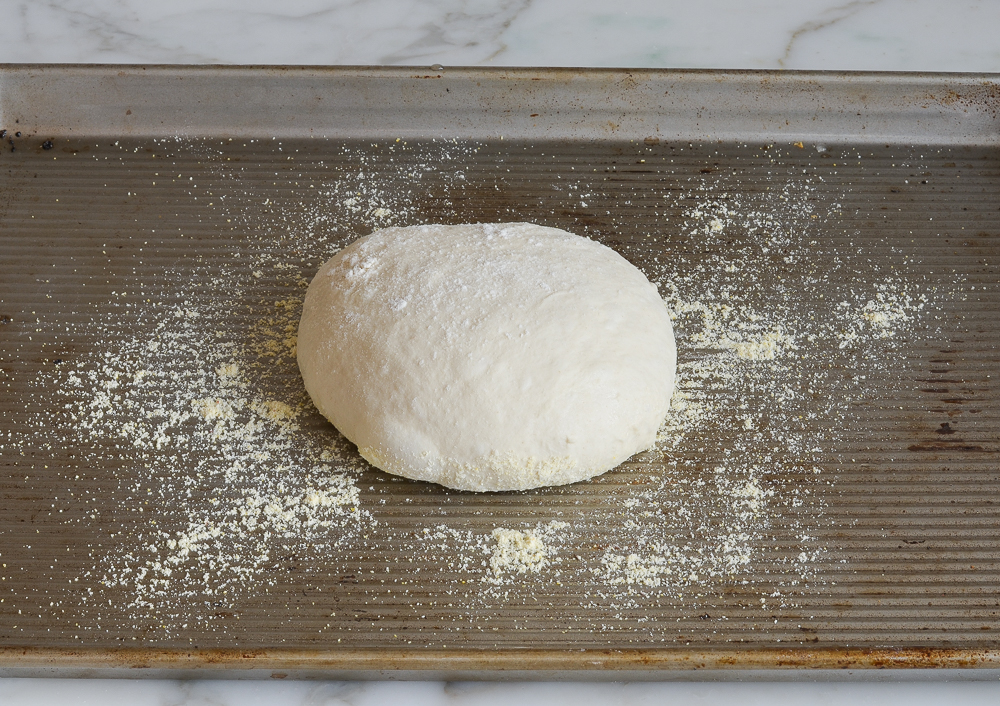
The dough will rise a bit.
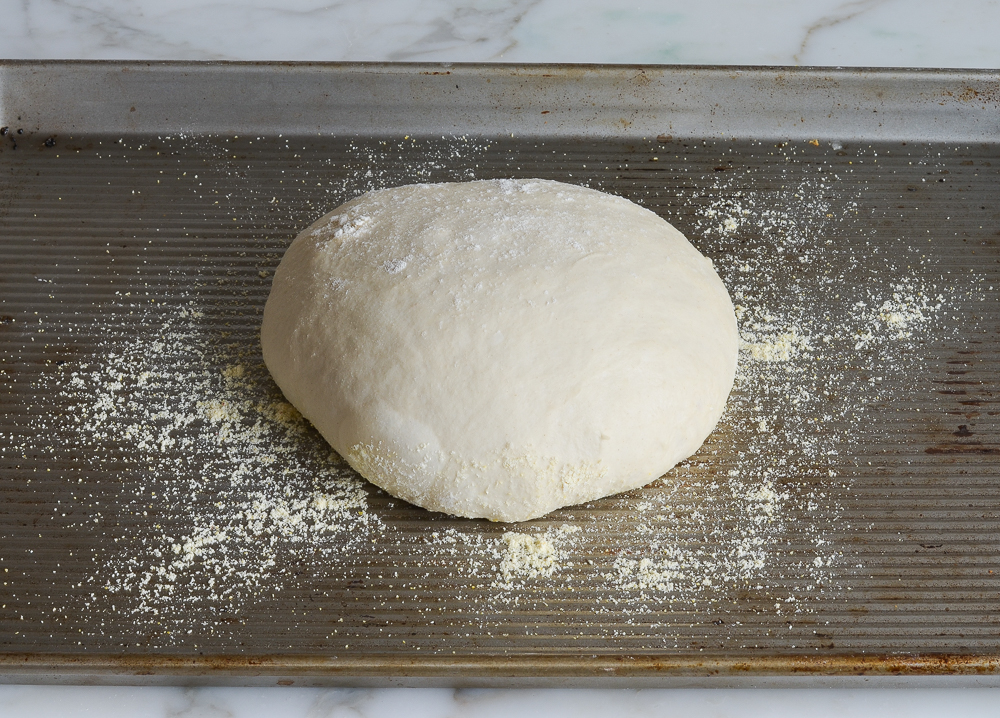
Generously dust the dough with flour. Using a sharp knife, make a few 1/2-inch-deep slashes in the dough — a scallop, cross, or tic tac toe pattern all look nice.
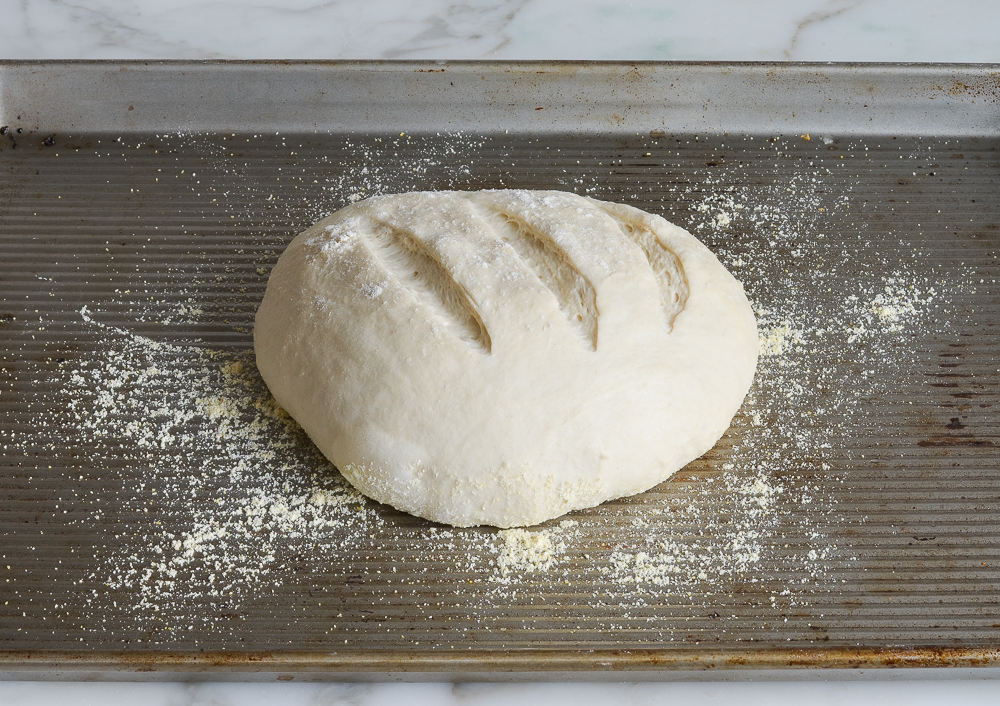
Set a metal pan on the bottom rack of a preheated 450°F-oven. Slide the baking sheet with the dough into the oven, and carefully fill the metal cake pan with one cup of hot tap water. This creates steam in the oven. (Try to do this quickly so as not to let heat out of the oven.) Bake until the loaf is golden brown, about 30 minutes. Cool completely on a wire rack.
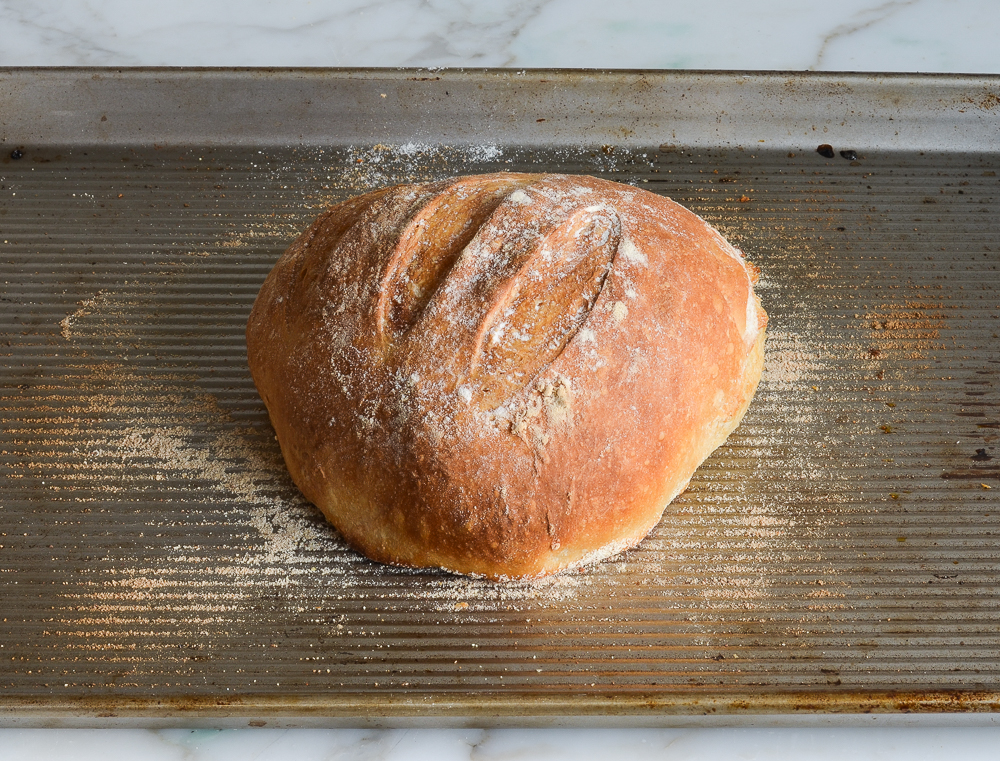
This bread is best enjoyed fresh on the day it is made. Once sliced, place the loaf cut-side down on a cutting board or plate and leave it uncovered.
How To Freeze
The dough can be portioned into thirds and frozen in airtight plastic containers for up to 1 month. Defrost the dough in the refrigerator overnight, then shape, rest and bake as usual. The baked loaves can also be frozen whole or sliced. Wrap in a zip-top freezer bag and freeze for up to 1 month. To thaw, take the bread out of the freezer and let it come to room temperature, about 3 hours. Reheat in a 350°F oven until warmed through, about 10 minutes.
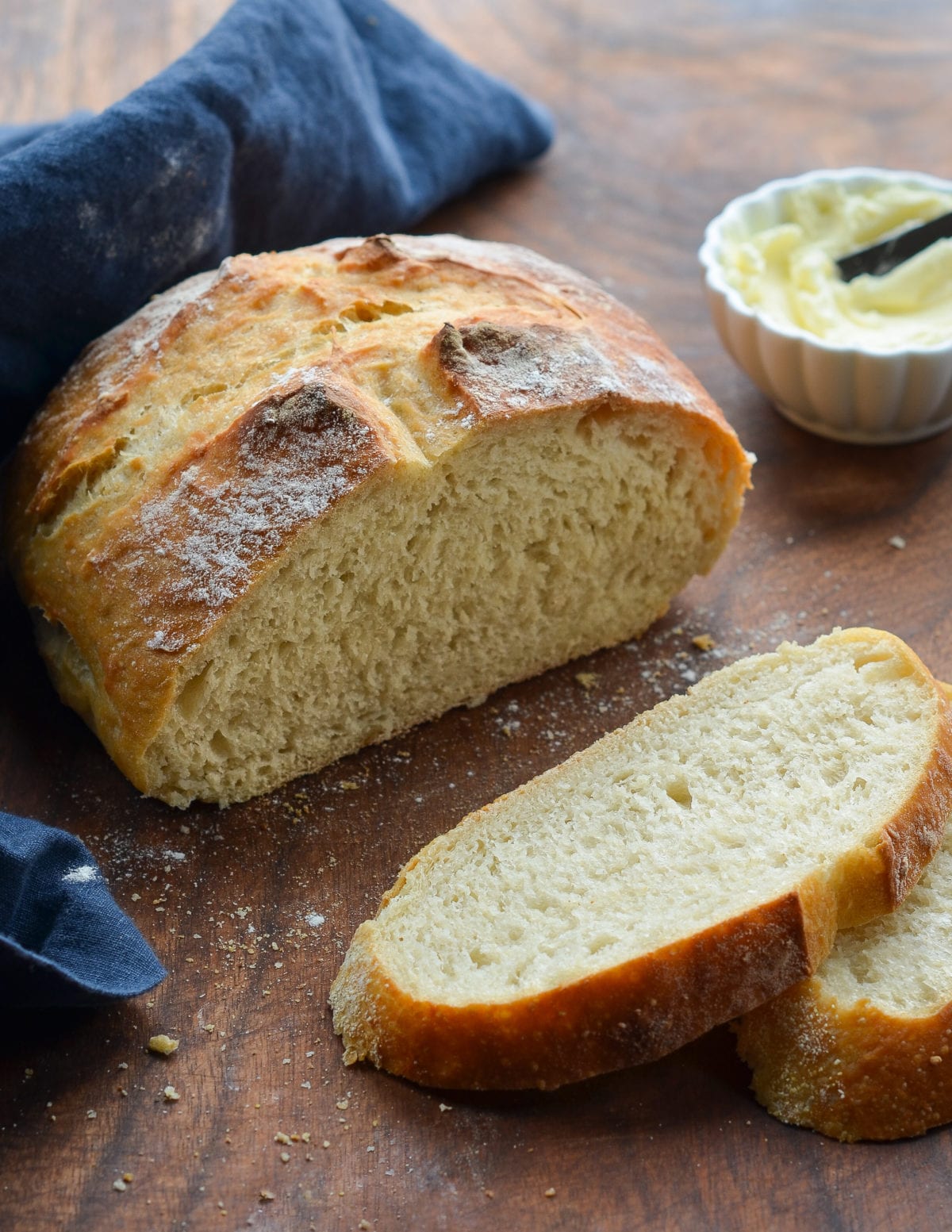
You May Also Like
Crusty Artisan Bread
This crusty bread recipe is astonishingly easy—no kneading required—and makes three beautiful loaves, which you can bake as needed.
Ingredients
- 6½ cups all-purpose flour, spooned into measuring cup and leveled-off (preferably King Arthur; see note)
- 4 teaspoons kosher salt
- 1½ tablespoons instant/rapid-rise yeast (see note)
- 3 cups lukewarm water (no need to be exact but lukewarm is about 100°F)
- Cornmeal, for dusting the pan
Instructions
- In a very large (6-quart) bowl, whisk together the flour, salt, and yeast. Add the water and stir with a wooden spoon until the mixture is uniformly moist, without any patches of flour. The dough should be sticky and conform to the shape of the bowl. If your dough is too dry, add a few tablespoons more warm water. If it's too wet, add a few tablespoons of flour. (See the step-by-step photos for guidance on what the dough should look like.) Cover the bowl loosely with plastic wrap and let it sit on the counter in a warm spot for 2 hours. If you plan to bake a loaf immediately, proceed to the next step. Otherwise, place the bowl of dough in the refrigerator to be used over the next 14 days. (Once refrigerated, the dough will shrink back a bit; that's okay. Do not punch down the dough at any point, and keep it loosely covered with plastic wrap.)
- Dust a sturdy baking sheet with cornmeal.
- Dust the surface of the dough and your hands lightly with flour. Pull out one-third of the dough and coat the outside lightly with flour (you don't want to incorporate more flour into the dough, you just want to be able to handle it). Gently work the dough into a smooth ball, stretching the surface and tucking the ends underneath, adding more flour as needed so it doesn't stick to your hands. (Don't overwork the dough; this process should only take about 30 seconds.) Put the dough ball onto the prepared baking sheet and let it rest at room temperature, uncovered, for about 40 minutes. (If the dough has been refrigerated, allow it to rise for 60 minutes, or up to 90 minutes if you want a more open and airy crumb structure.) The dough will rise a bit. It may also spread/flatten a bit; that's okay.
- Preheat the oven to 450°F. Set one rack in the lowest position of the oven and one rack in the middle position. Place a metal pan (any metal cake pan or broiler pan will work; just don't use glass) on the bottom rack. (You will fill this with water later to create steam in the oven).
- Generously dust the dough with flour. Using a sharp knife, make a few ½-inch-deep slashes in the dough -- a scallop, cross, or tic tac toe pattern all look nice.
- Slide the baking sheet with the dough into the oven, and carefully fill the metal cake pan with one cup of hot tap water. (Try to do this quickly so as not to let heat out of the oven.) Bake until the loaf is golden brown, about 30 minutes. Cool completely on a wire rack.
- This bread is best enjoyed fresh on the day it is made. Once sliced, place the loaf cut-side down on a cutting board or plate and leave it uncovered. (If it lasts beyond a day, I suggest slicing and freezing.)
- Freezer-Friendly Instructions The dough can be portioned into thirds and frozen in airtight plastic containers for up to 1 month. Defrost the dough in the refrigerator overnight, then shape, rest and bake as usual. The baked loaves can also be frozen whole or sliced: Wrap in a zip-top freezer bag and freeze for up to 1 month. (If you plan to use slices one at a time, place pieces of parchment between them so they don't stick.) To thaw, take the bread out of the freezer and let it come to room temperature on the countertop. Reheat in a 350°F oven until warmed through, about 10 minutes.
- Note: Active dry yeast may be used instead of instant/rapid-rise yeast, however, the dough will take longer to rise. To give active dry yeast a boost, you can dissolve it in the lukewarm water and let it sit until frothy, about 10 minutes. After that, add it to the flour and salt, and proceed with the recipe.
- Note: I use King Arthur flour, which is higher in protein than some other all-purpose flours. If using a flour with a lower protein content, such as Gold Medal, you will likely need to add a few more tablespoons of flour.
Nutrition Information
Powered by ![]()
- Serving size: 1 slice
- Calories: 100
- Fat: 0 g
- Saturated fat: 0 g
- Carbohydrates: 21 g
- Sugar: 0 g
- Fiber: 1 g
- Protein: 3 g
- Sodium: 64 mg
- Cholesterol: 0 mg
This website is written and produced for informational purposes only. I am not a certified nutritionist and the nutritional data on this site has not been evaluated or approved by a nutritionist or the Food and Drug Administration. Nutritional information is offered as a courtesy and should not be construed as a guarantee. The data is calculated through an online nutritional calculator, Edamam.com. Although I do my best to provide accurate nutritional information, these figures should be considered estimates only. Varying factors such as product types or brands purchased, natural fluctuations in fresh produce, and the way ingredients are processed change the effective nutritional information in any given recipe. Furthermore, different online calculators provide different results depending on their own nutrition fact sources and algorithms. To obtain the most accurate nutritional information in a given recipe, you should calculate the nutritional information with the actual ingredients used in your recipe, using your preferred nutrition calculator.

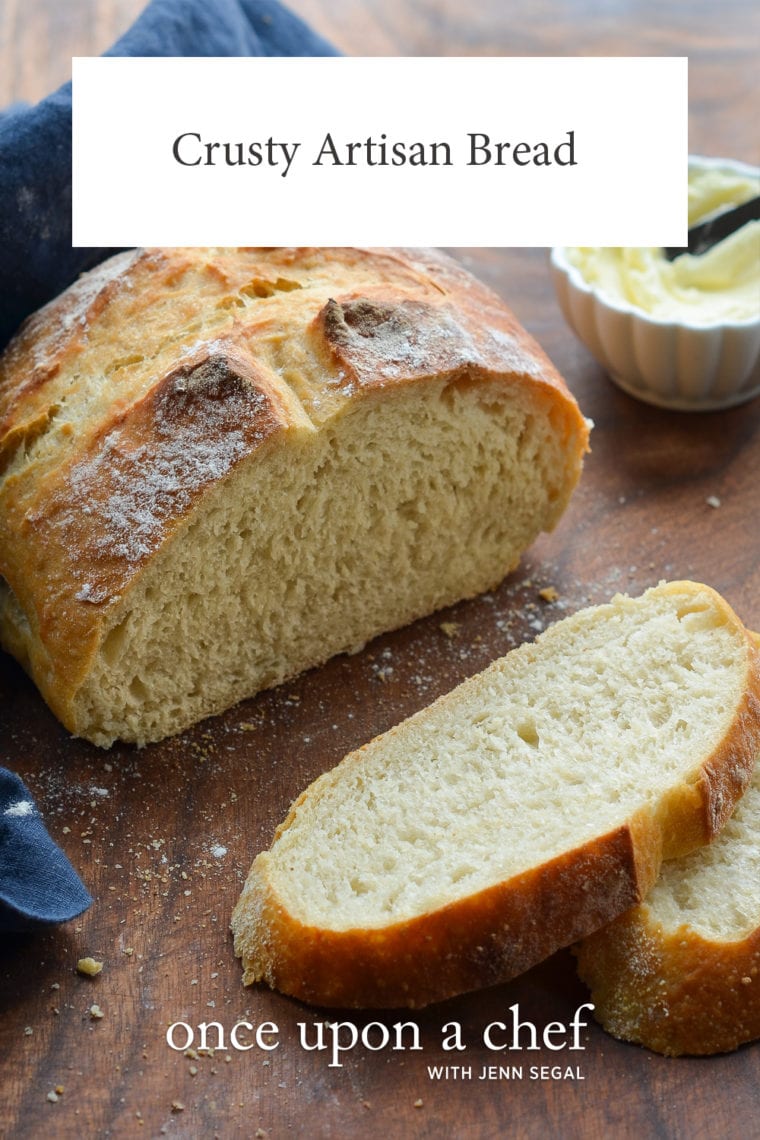
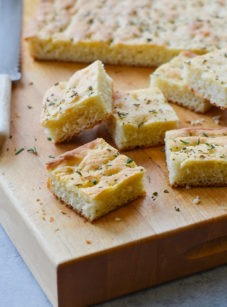
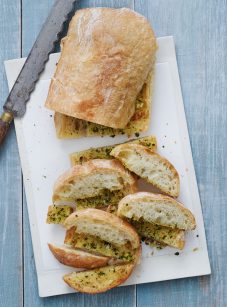
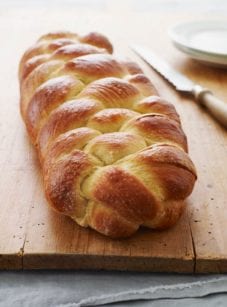
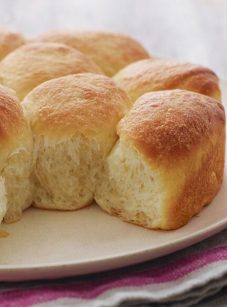
My first attempt with yeast; followed directions, I believe, but used Gold Medal flour; waited over 2 hours and dough did not rise; total flop; what did I do wrong?
Hi Maggie, I’m so sorry you had trouble! Was your yeast fresh? What type of yeast did you use?
I didn’t even use the proper terminology! I used dry active yeast and believe I should have added water and sugar/salt before mixing with flour; instead I mixed everything together and then added water
That’s correct — that’s where you went wrong. I hope you have better luck the next time around!
Is the oven fan assisted?
No, I always used the regular setting on my oven.
Very tasty bread, thank you–but a question: will reducing the amount of salt in the recipe be a problem? We thought the flavor was a bit salty for our tastes, but I wondered if reducing the salt would affect the rise. Thanks so much!
Hi Debbie, Reducing the salt is perfectly fine; it’s just to add flavor and will not impact the rise at all. 🙂
I made this bread today and it was great except. . . I used table salt instead of kosher salt and it was just a bit too salty. With a little investigative reading online I learned the size of the table salt crystals are finer so more salt fits in a teaspoon than a teaspoon of kosher salt. Teaspoon for teaspoon, table salt is saltier.
I wondered if Maggie made the same mistake?
Salt is not just for flavor. It is critical for strengthening the gluten so without enough you’ll get dense and crumbly bread. The gluten structure must support the CO2 bubbles that expand before they can set during baking.
Yay, I survived – my first attempt at baking bread. My first proofing seemed over-sticky, but my breadmaking friend told me to hang in there until the second proofing. Followed directions, conquered my worst fears and had a lot of fun. Never thought I’d have so much joy witnessing the powers of yeast. The flavor is great, the crust divine, with a slightly chewy texture overall- pretty cool! It’s not quite as high as yours (“dough rise envy”), so I’ll wager it may have been the room temperature (pretty warm) and/or maybe a too-long first proofing (2 hours). After the explosion of flour, looking like a busted raid, I put the other two rounds in the freezer and called it a day.
I’m so glad I found you (via curious google search: “bread recipe, ap flour, instant yeast”), and I can’t thank you enough, Jenn! I’ll be back and I’ll keep learning and practicing. 🙂
So glad you enjoyed it! 🙂
I made this bread a few days ago and it was seriously…phenomenal. It all went off without a hitch! I tried making it again today but when I was forming the loaves I felt the dough was really lumpy in some spots. I am still going to let them rise for 40 minutes and see what happens. I mixed it really well so I’m so confused as to why there are massive lumps. Is this going to ruin the final product?
Thank you!
Hi T, sorry to hear you had problems with the dough this time around. Did you make any changes to the recipe? How did the bread turn out?
Could a Kitchen Air Mixer with dough hook be used instead of the wooden spoon? Thank you.
Hi Bettes, this is really easy to mix by hand, but you can use a mixer if you’d prefer. Hope you enjoy!
Just made the bread! I don’t have words to describe how good it was!! But then everything I have made from Jenn’s recipes tastes amazing.
I have tried chicken, fish, baked goods everything is foolproof. Thank you Jenn for sharing your recipes with us and making us into confident cooks!!
This bread is absolutely fabulous! I particularly like the way the crust stays really crisp. That is hard to achieve in a homemade bread. It is so hard not to eat the whole thing! I have shared this recipe with several friends, and recommended your website. Jenn, every single recipe I’ve tried has been great! This is now my “go to” site when I want to find a recipe for something. Thank you so much!
Hi Jenn! Is it possible to cut this recipe in half?
Sure – enjoy!
I’ve been using the Hertzberg/Francois recipe that this is based on for years. I use it for pizza crust as well (usually making the dough more wet). It is even better if you leave the dough in the fridge for a few days or even longer. Develops more flavor! I tend to make it into small individual rolls/loaves, that I heat in the toaster oven and then dip in olive oil and salt. Yum, yum. For me that can be a whole meal, with some good sharp cheese, olives and a glass of red wine.
I am looking to make some grilled cheese sandwiches with this bread! Are the loaves big enough for sandwiches? Thank you!
Yep, definitely! 🙂
This bread is fabulous !! Followed recipe as directed. Bread is soft and airy in the middle and crusty on the outside. Made 3 loaves, shared with family. Great for toasting. This is my go to recipe from now on. Better than the bakery and enjoyed making. Thank you for the great recipe…